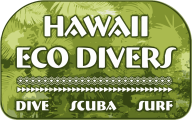UNDERWATER NAVIGATION
Underwater Navigation
Have you ever gotten lost while diving? Is it something you worry about? Or have you been on a scuba tour and wondered how your instructor didn’t get lost? If so, underwater navigation is for you!
Underwater navigation skills serve divers in many ways. Confidence in navigation helps ease anxiety, avoid long surface swims, converse air, and avoid buddy separation. Scuba divers use a couple different techniques to find their way underwater. They track distance, use natural landmarks, and tools like compasses to navigate.
Distance Estimation
Perhaps the most common way divers estimate distance is by counting kick cycles. To measure a kick cycle, you can swim at an enjoyable pace and counts the times one leg returns to the same position, thus measuring the distance traveled by one complete fin stroke. Measuring kick cycles is easy, and allows you to stop and start while keeping an accurate estimation on distance. Depending on how far you go in a few kick cycles, you can easily measure how far you will go with many. There are other ways to estimate distance traveled. One can simply check how much time has elapsed swimming one way or another, though this method does not take into account speed and stops. You can also check your air consumption and approximate distance this way, though, again, this method does not account for stops, fluctuating swimming speeds or water conditions.
Natural Navigation
Nature helps divers navigate! The sun casting light and shadows, water movement, floor composition, depth, reefs and animals, and even noise can all help you orient yourself.
The sun and its shadows can help you understand your location. Depending on where the sun (and it’s shadow) falls at the beginning of a dive, the sun should be over your other shoulder at the turn of the dive. The amount of light filtering can also help orient a diver, because light intensity changes with depth.
Water movement helps keep you on course because the current usually flows in the same direction throughout a dive. So at the beginning of a dive, when a diver swims into the current, he knows to swim with it on his way to shore. However, it is important to keep in mind that currents can change direction with tide. You should also keep movement caused by surge in mind to locate the shore.
Floor composition is another notable way to orient naturally. Usually, sand ripples fall parallel to shore, so swimming perpendicular to them means one is moving closer to or farther away from shore. Further, along the ocean (or wherever else one dives) floor, there are natural markers to help guide the dive. Reefs, tubes, slopes, or other natural markers direct divers. If a reef is on the right at the beginning of a dive, it should be on the left at the end. Slopes indicate depth, and are an easy way to know whether one is moving into deeper or shallower water.
If you know the area you are diving well, you may start to observe specific reefs that house specific animals, which can clue you into where you are. Boat sounds and waves crashing into rocks also give you some indication of location.
Compass Navigation
Compass navigation is a little more complicated, but obviously also more accurate. Referring to the below diagram, the important things to note are (2) the lubber line and (3) the bezel with index marks. When holding the compass out and as level as possible, the lubber line (an imaginary line through the middle of the compass) must be in line with the center of your body. When you change directions, the needle appears to move away from the North marking (though, of course, North is not moving, you are). You move the bezel to line up the needle with North. The index marks indicate degrees. This is how you calculate direction! By adding/turning 90 degrees 4 times, you make a square. By adding/turning 180 degrees, you turn fully around.
Divers follow different patterns when diving. All of these skills are taught in our Advanced Open Water Course. You can call or sign up online with us any time! Our course offers 2 dives from a boat, at least one of these being a deep wreck dive. Then, there are 3 other dives to do while working on skills like underwater navigation and peak buoyancy performance. You can start reading more about these skills with the PADI elearning course.
Mahalo for reading,
DMC Nikita
